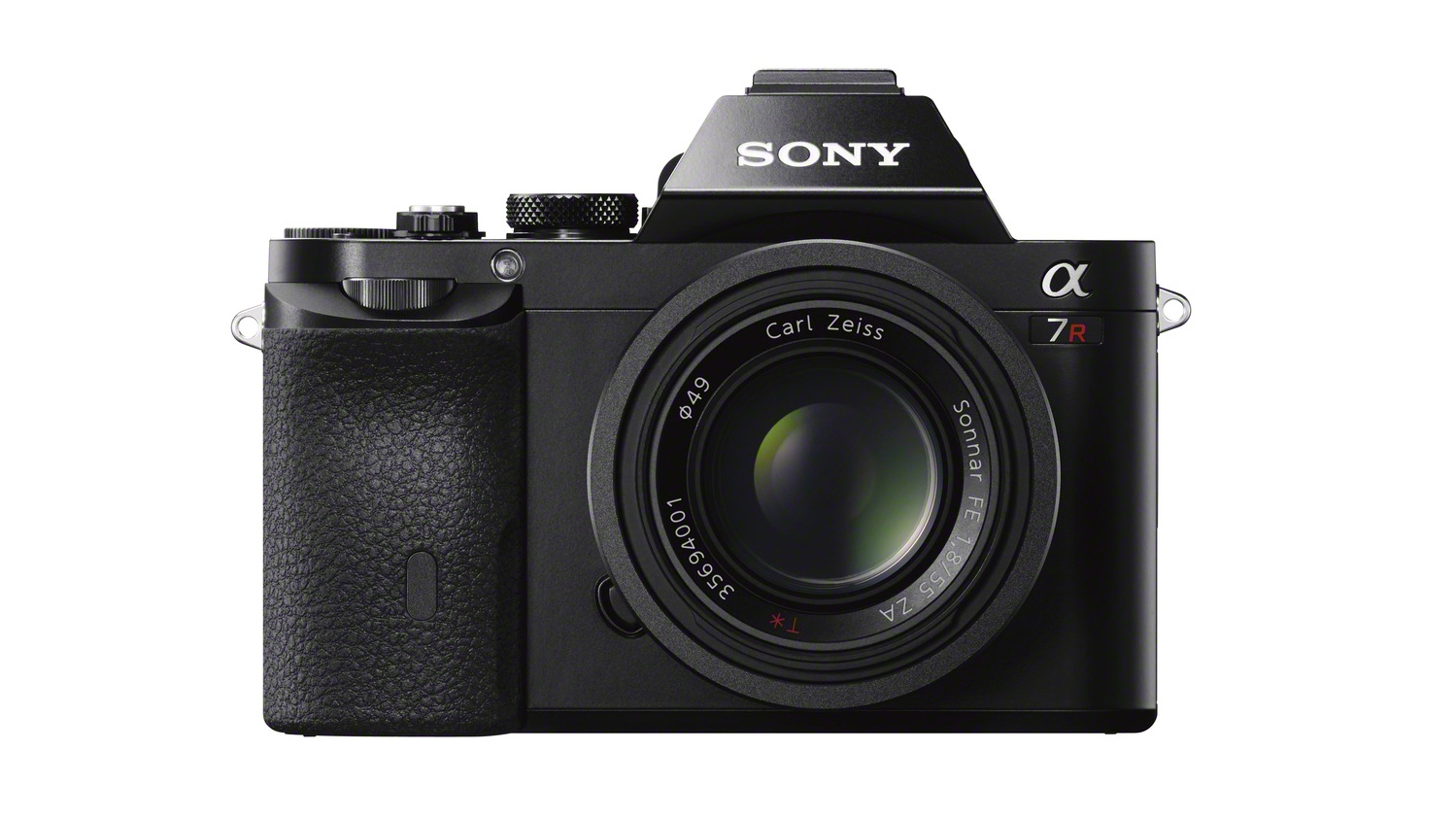Why you can trust TechRadar
We shoot a specially designed chart in carefully controlled conditions and the resulting images are analysed using DXO Analyzer software to generate the data to produce the graphs below.
Our normal procedure when testing new cameras is to process the raw files using the supplied software and convert them into TIFFs before analysing them using DXO's Analytics software. All dynamic range optimisation and noise reduction systems are set to their minimum values.
A high signal to noise ratio (SNR) indicates a cleaner and better quality image.
For more more details on how to interpret our test data, check out our full explanation of our noise and dynamic range tests.
JPEG signal to noise ratio
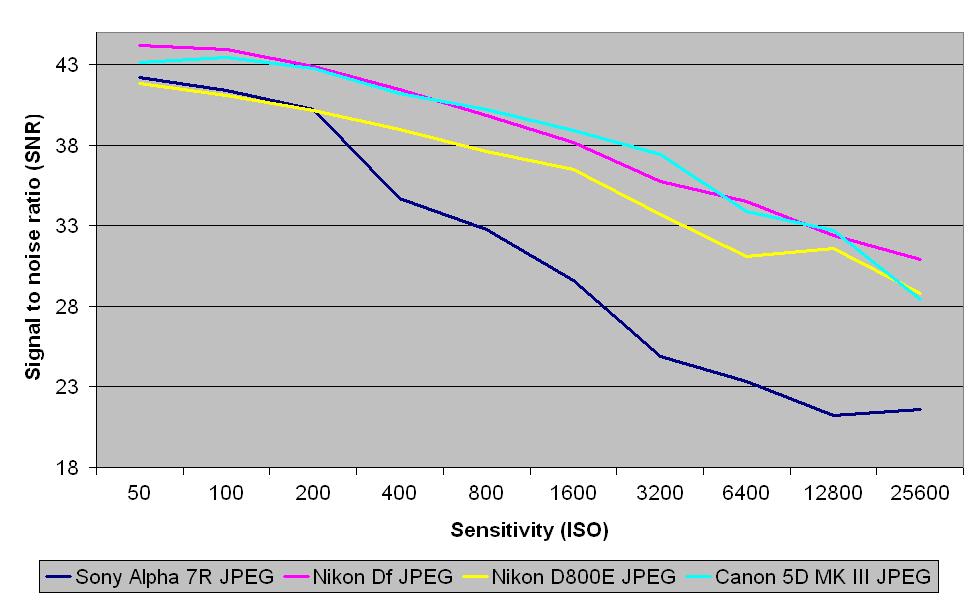
With a pixel count this high, it's not too much of a surprise to see the camera put in what appears to be a "poor" signal to noise ratio performance. It seems that the Nikon D800E, which also features a high resolution and no anti-aliasing filter puts in a more balanced performance when it comes to JPEG files, with the 7R perhaps doing a better job of maintaining detail at higher sensitivities, even if it means increasing noise levels.
Raw signal to noise ratio
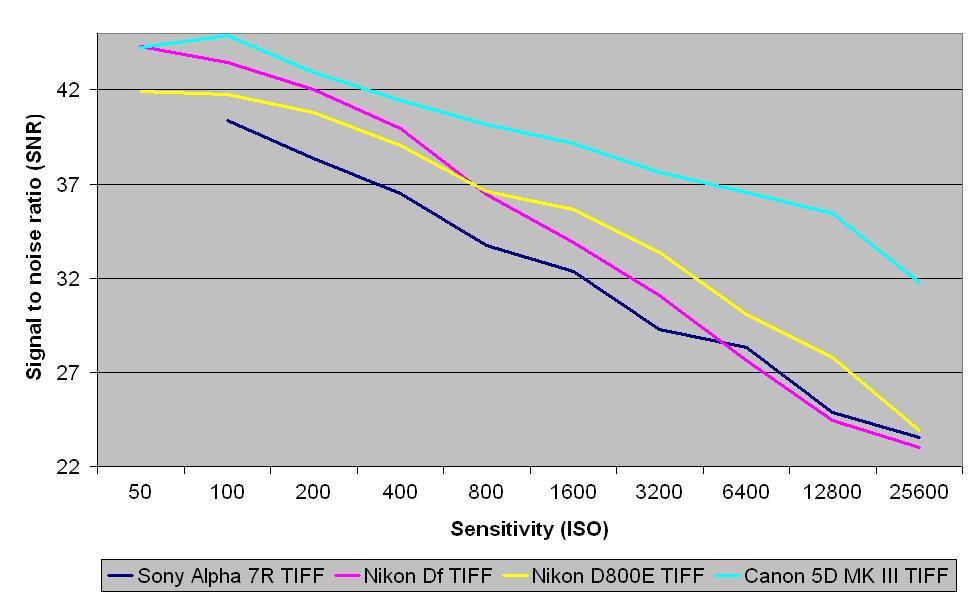
This graph shows a better performance for the raw files (after conversion to TIFF), which is indicative of the greater level of data in these files and the higher level of control over them. Here we can see it compares pretty closely with the Nikon Df, while the D800 again puts in a better overall performance. It is the Canon 5D Mark III which is the best performer here though.
JPEG dynamic range
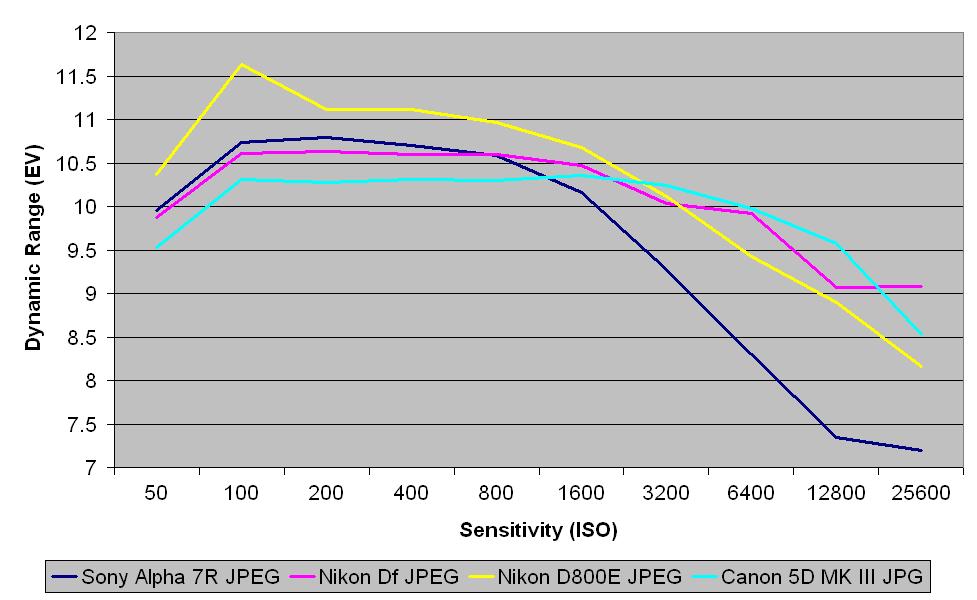
For dynamic range, the Sony puts in a very good performance at the lower end of the sensitivity scale, beating both the Canon 5D Mark III and the Nikon Df. The Nikon D800 beats it all sensitivities. When the range hits the higher end, ISO 1600 and above, the 7R suffers a significant drop off when compared to the other cameras on test.
Raw dynamic range
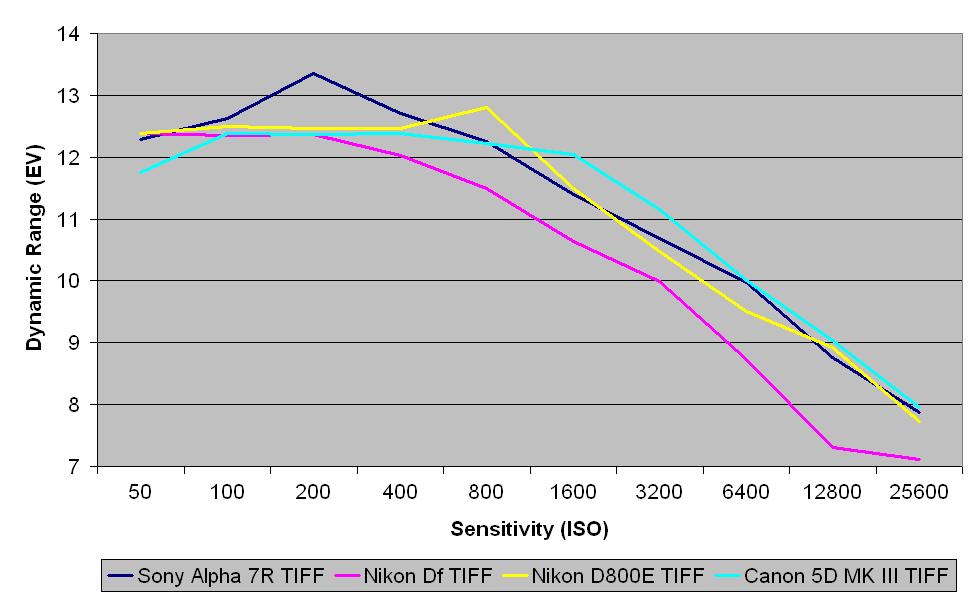
With raw format files (after conversion to TIFF), the A7R puts in a more consistent performance, beating the other cameras significantly at the lowest end of the sensitivity scale (50-400). From ISO 800 and on, it puts in a very close performance with both the Canon 5D Mark III and the Nikon D800E, and outperforms the Nikon Df.
Current page: Noise and dynamic range
Prev Page Image quality and resolution Next Page Sample imagesAmy has been writing about cameras, photography and associated tech since 2009. Amy was once part of the photography testing team for Future Publishing working across TechRadar, Digital Camera, PhotoPlus, N Photo and Photography Week. For her photography, she has won awards and has been exhibited. She often partakes in unusual projects - including one intense year where she used a different camera every single day. Amy is currently the Features Editor at Amateur Photographer magazine, and in her increasingly little spare time works across a number of high-profile publications including Wired, Stuff, Digital Camera World, Expert Reviews, and just a little off-tangent, PetsRadar.
